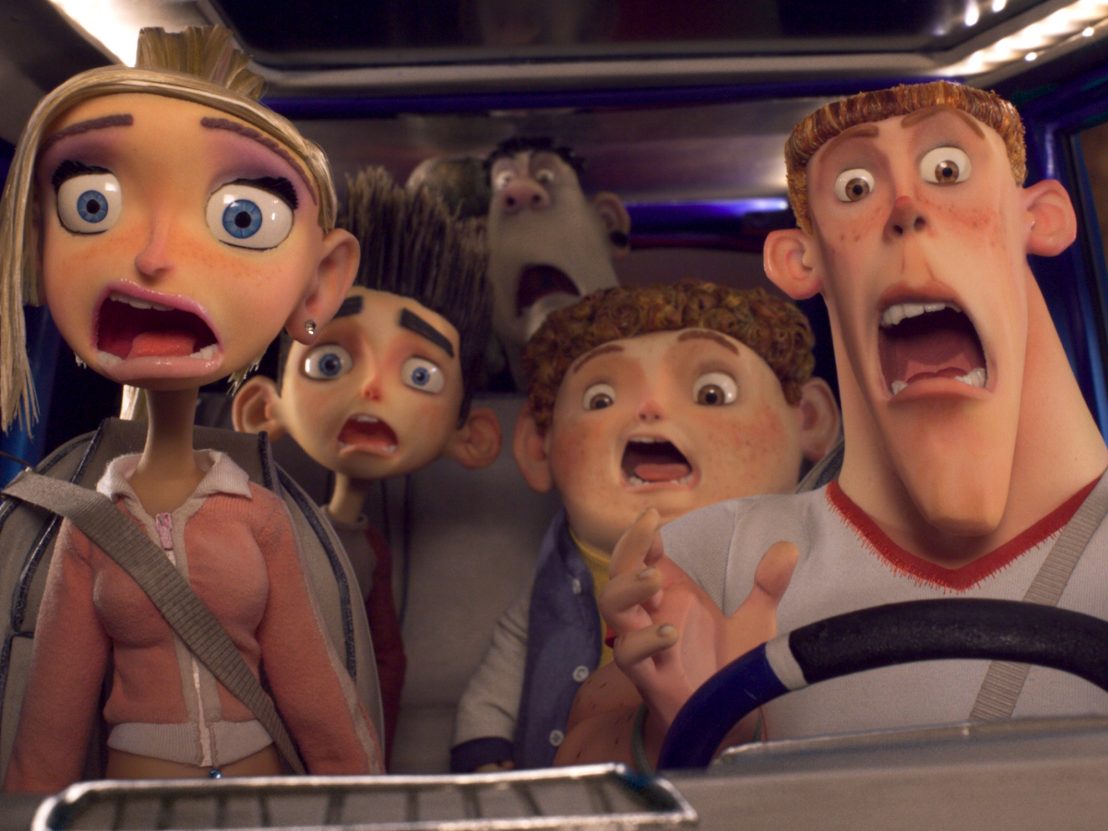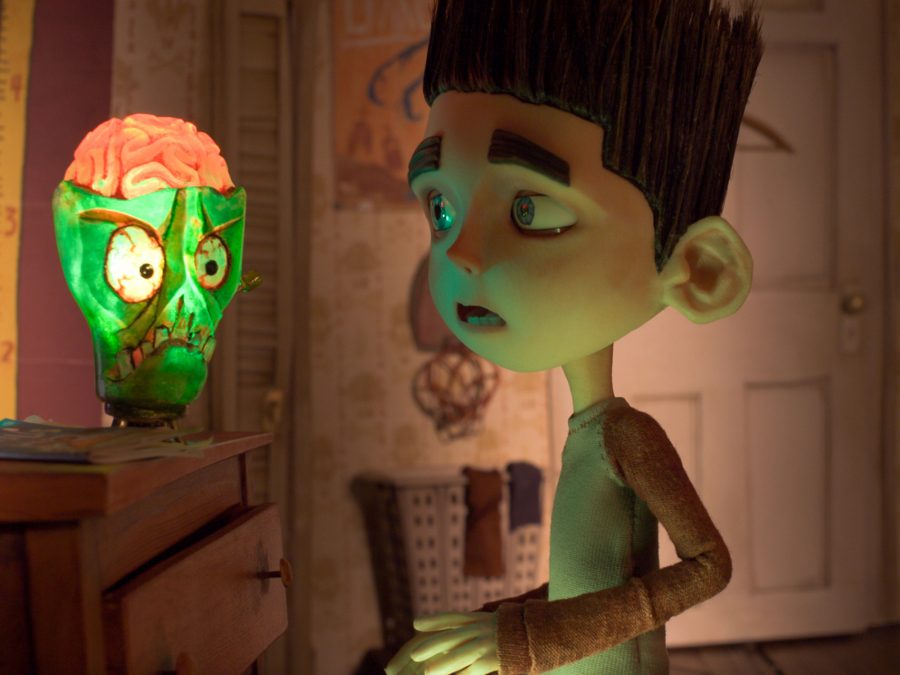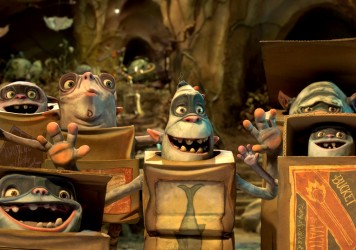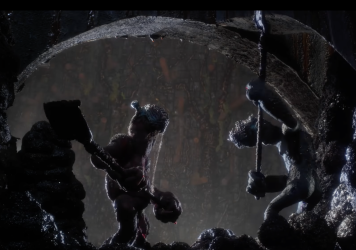
The co-director of the weird and wonderful stop motion modern classic ParaNorman reflects on the film's legacy a decade later.
Ten years ago, Laika Studios cemented their status as stop-motion animation pioneers with their second feature, ParaNorman. A family horror-comedy about a young outcast who can commune with ghosts and has to stop a curse connected to his sleepy Massachusetts town’s disturbing witch trial past, the film was one of 2012’s finest, animated or otherwise. Ambitiously tactile and askew in its distinctive animation and designs, uniquely mature in its storytelling.
Ahead of a new 4K anniversary theatrical re-release, co-director Chris Butler graciously hopped onto Zoom to discuss the unfinished pitch that got him the greenlight, the challenges of metaphorically balancing tone and literally balancing puppets, and the important queer milestone of one Mitch Downe.
LWLies: What was your first memory of pitching ParaNorman?
Chris Butler: I was Head of Story on Coraline and first showed the idea to Henry Sellick. I had always been obsessed with horror and wanted to make this Scooby Doo-esque horror story for kids. He read that and said “this is great, we should show it to Travis [Knight, Laika President].” I didn’t do any pitch to Travis, it was just “Read this and tell me what you think.” As I recall, he called me to his office and told me “I want it to be our next movie and I want you to direct it.” He says that my response was sitting there in shock staring at him for a few minutes!
Travis had read the first 30 pages and went “Where’s the rest?” I said “Oh, it’s back home!” and it wasn’t! I hadn’t finished writing it! I finished that first draft as quickly as I could.
How hard was it working out the tone of the film?
That was a daily concern. I directed with Sam Fell and it really helped having somebody you can constantly check yourself on. There’s a lot of so-called “spooky” kids’ stuff, but much of that is actually pretty tame. It might use grotesque imagery, but it’s not really delving into dark subject matter. ParaNorman doesn’t shy away from those topics of death, judgement, guilt, past sins, persecution. We wanted it to feel like a rollercoaster where you have peaks and troughs. You have moments which are genuinely upsetting and scary, but you have to offset them though not too much so.
Of course, we were making this thing many, many times. We make the movie in storyboards to create an animatic and we watch that thing so many times to see how it plays. Having that process means you can see how far you’re going with the drama, the horror, the comedy.

Watching back again, I was struck by how truthfully bittersweet and melancholic much of ParaNorman is, particularly by the ending. I feel like a less confident movie would’ve tried for a full uplift.
I think the character that’s most important on how that plays out is Perry. He is the world’s worst dad in so many ways! I didn’t want to get to the end and he’s suddenly a completely different character, because that’s not how life works. What we get is Perry awkwardly making an effort. That last scene where he acknowledges the ghost of his mother might be sitting next to him? That’s him trying to see things from Norman’s point-of-view. It’s not perfect, but it’s a first step, and that feels real to me.
I remember watching the film in cinemas back in 2012 and having a small revelation to the reveal Mitch’s sexuality at the end. If you hold it to 2022 standards, it’s really minor. But back then, to somebody like me, it was an “Oh, cool, I wonder why this speaks to me…”
Yes!
Was that something you had to fight for or did it sail through without any pushback?
Mitch’s gay reveal was specifically placed at the end because the movie is about judgement. Every character in the movie is either judged or judging, and I wanted to make the audience complicit in that. I wanted to make them feel like they knew a character just by looking at them. The reveal of Mitch’s gayness is almost an aside but I think that everyone who watches the movie is taken aback by it because they made an assumption based on the way he talks and his character; he’s a dumb jock.
That was all in from day one. Travis was always onboard. At no point did anyone try to get me to change it, because I think they all understood it was intrinsic to the genetics of the story. As a gay man, I never got the chance to talk about that in my work. It just wasn’t an option, so it was liberating to do something like that.
One thing that I am very proud about with Mitch, he’s not just defined by his sexuality. That’s not why he’s in the movie. He has a part to play. Inclusivity and diversity are important so long as not at every queer character is there just to be The Queer Character. They can be a character who just happens to be queer. I don’t want them to just tell a story about how they struggled with their gender or been bullied. I want the diversity to include the types of characters that are queer.
How did you come across [character designer] Heidi Smith?
I knew I wanted something really different so I went through a collection of student portfolios and that’s where I found Heidi’s work. Going through so many similar sketches and then reaching hers to find these beautifully grotesque designs. What I wanted to do with ParaNorman was not prettify it, I wanted it to have all the lumps and bumps of real-life. Blithe Hollow was a pretty rundown place in many ways and I wanted that to follow through to the characters. The designs I saw from Heidi were perfect, they immediately seemed right.
Of course, the challenge was that asymmetry doesn’t work well in three-dimensions. You’re making puppets with differently-sized legs and feet, no necks, no wrists; all major no-nos. So, there was a lot of trying to figure out how to make these puppets that don’t behave themselves work. How to make a character walk with differently-sized legs yet still look like a regular walk.
Were there any technical feats you weren’t able to pull off?
There were times when I was writing where I found myself wondering “I have no idea how we’re gonna do this.” But we pushed and found a way. On these movies, you’re failing all the time. You’ll try something and it doesn’t work, so you’ll try it a different way. You might tweak the arms slightly on a puppet so they’re not so off-kilter, or the design of a doorframe in a concept art you find in practice can’t actually fit a puppet so you have to widen the doorframe. Little things like that are a constant throughout production, but there was no one thing I wanted to do that we couldn’t.
At times, that power was kinda terrifying. Aggie was a combination of stop-motion, CG, 2D. We threw everything at her and I’m so glad we did cos she looks so unique! But when I first saw her on-stage, it was basically an armature with bumps on it as registry marks. I remember thinking “How is this ever going to look good?!” Then the tests started coming through and I realised this was something special.
For its 10th anniversary, PARANORMAN is back in cinemas in 4K for the first time.
Published 28 Oct 2022

Hugh Jackman’s intrepid explorer makes a startling discovery in Laika’s latest stop-motion treasure.

A delightful, comic animation with sophisticated social themes from the makers of ParaNorman and Coraline.

The animator’s long-awaited fusion of handmade sci-fi and horror will premiere at the Locarno Film Festival.